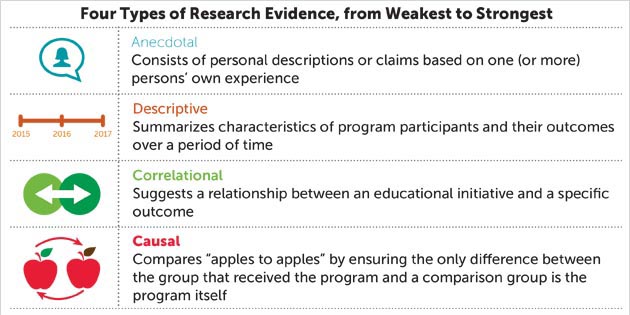As school districts across the country invest in new educational technology, they need timely, trustworthy evidence on the effectiveness of these products and the strategies for implementing them. But anecdotal experience, recommendations, and marketing materials are often the only information available to support these decisions. How can school personnel decide which evidence to trust?
A new guide from Mathematica Policy Research’s Center for Improving Research Evidence describes four key types of evidence—anecdotal, descriptive, correlational, and causal. The guide explains how to tell which type of evidence supports claims about effectiveness, ordering them from weakest to strongest. It also provides examples of common sources for each type of evidence, such as marketing materials, grey literature, and independent evaluations.

“We developed this guide as a resource for districts to evaluate the effectiveness of their educational technologies, but the concepts apply more broadly and will help other school districts and organizations decide about adopting different approaches, such as a curriculum or a case management approach,” said Alexandra Resch, who directs Mathematica’s study.
Read more about our work in rapid-cycle evaluation.

